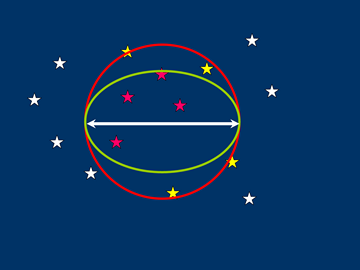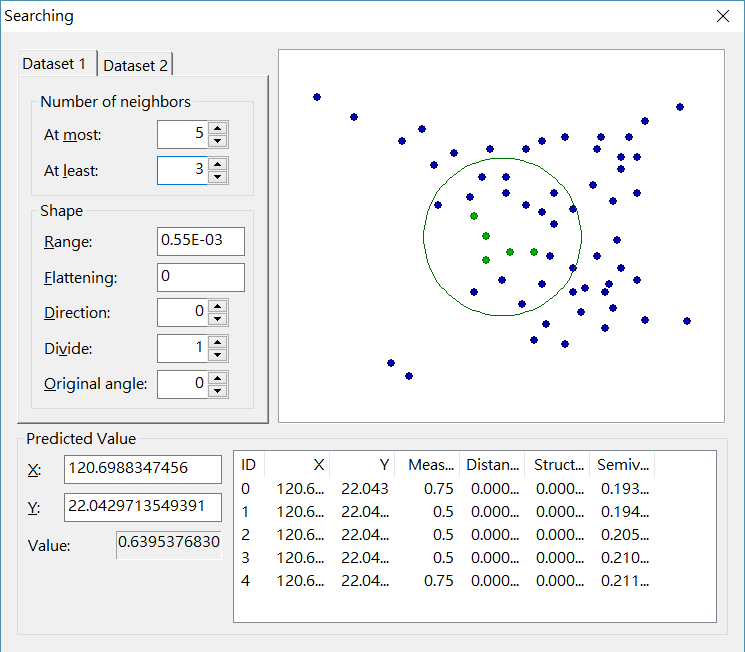
Searching Neighborhood
When users estimate the data in a position, Searching Neighborhood can help users to find out how many known sample points are needed for the reference to sample point data. Through the testing functions in the window, we can find out a search extent best fitting the data.
Set up neighborhood sample numbers: in this search extent, we have to set up the minimum and maximum amounts of sample points. These sample point data will be used as references to calculate the values of unknown points.
Setting up neighborhood types means that setting up a search shape. The system default is a circle search. If the system cannot find enough samples in this shape, it will expand the search extent to search for the neighborhood points closest to the circle. Therefore, the extent of a search shape also influences the searched samples for reference and also indirectly influences the calculated unknown point values.
As presented in the top-right graph, the maximum of neighborhood sample points is 8, the minimum of that is 4, and the radius of the search extent is 10. When both have the same radius but different flattening rates, the search shapes are different and searched sample numbers are different. The green circle obtains 4 red stars, but the red circle obtains 4 red and 4 yellow stars. Therefore, the calculated unknown point values may vary as well.

1.Set up the number of neighbors to search at most 5 and at least 3.
2.Set up the neighborhood type is spherical search shape whose radius is 0.55E-03.

©2017 Supergeo Technologies Inc. All rights reserved.